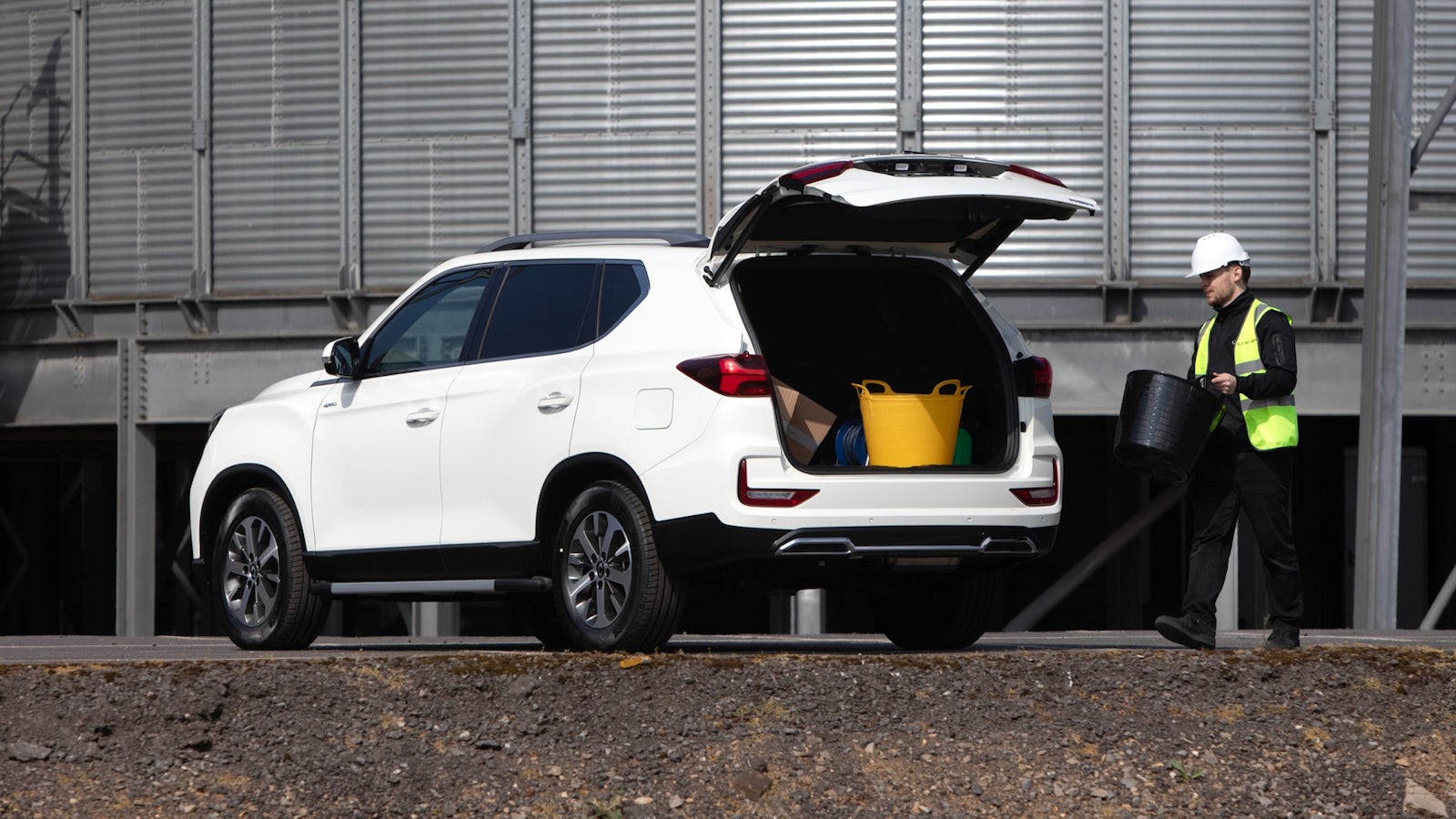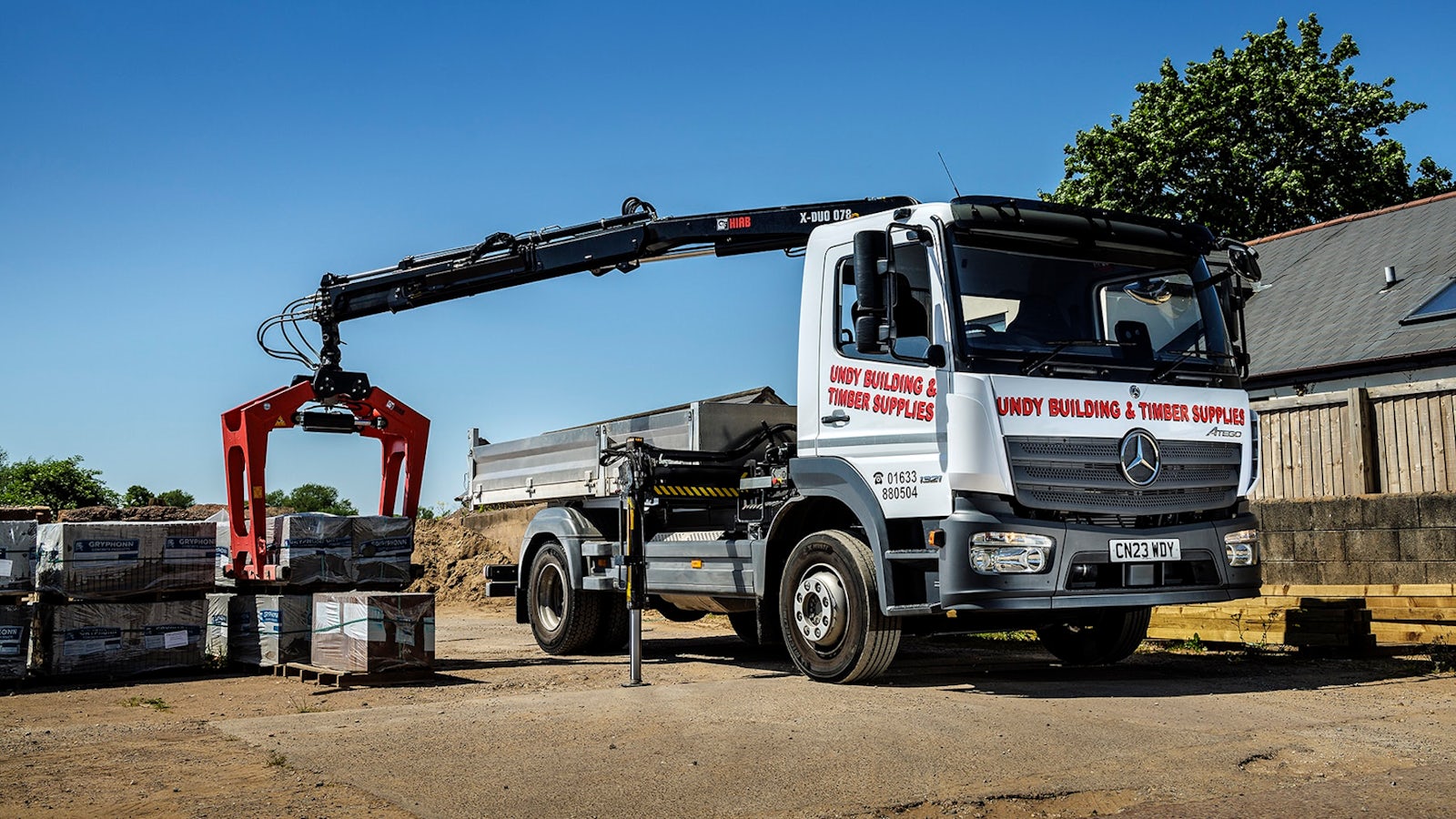What is a commercial vehicle?
May 01, 2025 by Tom Wiltshire

Defining a commercial vehicle is easy – in the UK, at least, a commercial vehicle is one that is used for business or commercial reward, rather than for personal reasons.
But getting into the nitty-gritty of commercial vehicles throws up some questions, as there are many different kinds of vehicles that are used for a variety of purposes – and sometimes, a commercial vehicle may be privately owned and used for both business and personal journeys. So what exactly classes a vehicle as a commercial vehicle?
What is a commercial vehicle?
A commercial vehicle (CV) is a vehicle that’s specifically designed for the transportation of cargo or equipment. While there are some sectors of business where passenger cars can be classed as commercial vehicles, for the most part CVs are designed specifically for a task.
Commercial vehicles can be privately owned and operated but for the most part are used by businesses and fleets. CVs have a very different use profile to a passenger car, and as such are designed for work rather than pleasure – they’re built to be hardwearing, cost-effective to run and repair, and prioritise the task they’re designed for over driver and passenger comfort.

What are the different types of commercial vehicles?
Commercial vehicles come in a huge array of shapes and sizes, from cargo vehicles smaller than a car right up to the largest mining equipment too big to use on public roads.
LCVs (Light Commercial Vehicles)
An LCV is any commercial vehicle with a gross weight of less than 3,500kg. They include:
Panel vans

Panel vans are among the most ubiquitous vehicles on the roads in the UK and form the backbone of thousands of small businesses. They range from the smallest car-derived vans at one end, such as the Toyota Corolla Commercial, through small vans such as the Citroen Berlingo, medium vans like the Ford Transit Custom, and large vans like the Mercedes Sprinter.
Panel vans have a fixed cab at the front and a cargo area at the rear – usually accessed via loading doors on the back and sliding doors at the sides.
Along with pickup trucks (below) a panel van is the most likely vehicle to cross over with a personal vehicle. They’re popular with owner-operators as they require less initial outlay than a more specialised vehicle, and can be as easy to drive everyday as a regular car.
Car-derived vans

As the name suggests, these are vans that are built out of a regular passenger car. Sometimes they’re based around an estate car, such as the Toyota Corolla Commercial, but more often than not they’re built from 4x4s, providing a rugged platform that’s good in rough terrain.
Car-derived vans typically have their back seats removed, a flat loading floor installed, and the rear windows replaced with opaque panels. They fly under the radar as they don’t look like a commercial vehicle, and they’re just as comfortable to drive as the cars they’re based on, but often don’t have the most payload.
Pickup trucks

Pickup trucks feature a cab at the front and a large, open load bed at the rear. Pickup truck cabs can be single (two-seat) extended (four or five-seat, but usually two doors) or double (five seats, four doors), with a shorter cab allowing for a longer load area and vice versa.
Double cab pickup trucks until recently were popular as personal or even family vehicles, as the most popular models offered many of the creature comforts of an upmarket car but with the reduced taxation of a commercial vehicle. This loophole has since been closed, however.
Crew/combi vans
The hybrid of a panel van and a people-carrier, crew vans are usually based on a panel van but have a second row of seats within the cargo area.
Box/Luton vans

These vehicles have a large, separate cargo area attached to the rear of their chassis. They offer increased loading capacity but often less payload, and are popular for companies that transport bulky goods such as furniture or supermarket delivery companies.
Pickup/dropside/tipper vans

Similar to a pickup truck but based on a van chassis. These three vehicles are differentiated from each other by the function of their load bed. Pickups operate like a regular pickup truck, with a tailgate at the rear. A dropside is one where all three sides of the load bed can be lowered, allowing for loading to be undertaken from any angle. On a tipper, the whole load bed can be hydraulically tilted to allow for quicker unloading.
HGVs (Heavy goods vehicles)
A heavy goods vehicle is one with a weight over 3,500kg. That definition encompasses all types of lorry as well as tankers, fire engines, mobile cranes and all manner of specialised equipment.
Heavy goods vehicles typically aren’t used for anything consumer-facing, instead usually they transport large objects or large quantities of goods from business to business.
A HGV, as with any vehicle over 3,500kg in the UK, requires a specialised licence to drive it – Category C1 for vehicles up to 7,500kg, Category C for vehicles up to 32,000kg, and Category C+E for fully articulated vehicles.
Rigid lorries

These are HGVs with a rigid chassis and a fixed container, rather than an articulated trailer. They’re basically a larger version of a box van or a flatbed, but can also be had with other items on the rear – such as a tanker, or even a specialised unit such as a kitchen, mobile library or prisoner transport.
Even the smallest of these at around 7,500kg are very different from a regular van to drive due to their cabover shape. They may have six or even eight wheels depending on their length.
Articulated lorries

These consist of a tractor unit and a trailer, coupled by a hinge which allows them to bend in the middle. Articulated lorries are among the longest vehicles on UK roads, with a maximum length of 18.75 metres.
Articulated lorries can be used to transport anything that they can be hooked up to – whether that’s a curtain or box trailer, a refrigerated container, a large flatbed, or a specialised unit for a specific purpose.
Specialist HGVs

The sky’s the limit with these – specialised HGVs encompasses everything from fire engines to cranes, cement mixers to road gritters, bin lorries to recovery trucks. Basically if it’s more than 3,500kg and it has a specific job, it fits in this category.
Passenger vehicles
In this instance, passengers are classed as ‘cargo’ rather than people. Specialised passenger transport includes vehicles of all shapes and sizes, and is driven for hire or reward rather than personal use.
Minicabs
A minicab is just a regular car that’s been licenced as a private hire vehicle. Sometimes they’ll be decked out with hardwearing seat covers, but otherwise they’re unchanged from passenger vehicles. In the case of ride-sharing services such as Uber, a minicab may actually be someone’s personal vehicle that they’re using for hire and reward.
Taxis

A taxi is different from a private hire vehicle in that it can be hailed from the street rather than pre-booked through a service or an app. Taxis are often specialised vehicle types, too – such as the iconic London cab, or adapted versions of passenger vehicles. Taxis in London especially have to meet a strict set of guidelines around accessibility and manoeuvrability, and their drivers require special training.
Taxis also carry a light on the roof indicating their occupancy status as well as a meter to tot up the price of the journey. The driver’s section is often enclosed.
Buses

Buses range from van-based minibuses intended to seat 12-15 people up to the largest double-decker or articulated units. Any vehicle with more than 9 seats that’s driven for hire or reward requires a special permit or licence, while larger vehicles have the same weight-based regulations as other commercial vehicles.
Key indicators of a commercial vehicle
So those are just some of the types of commercial vehicle you’re likely to see on the road – but what are some of the key indicators to look out for if you’re trying to identify one?
1. Purpose of the vehicle
Commercial vehicles are typically specialised to do a job, and it’s usually quite obvious what that job is just from looking at the vehicle.
2. Weight and size
Though there are some exceptions, commercial vehicles tend to be much larger and heavier than a typical passenger car.
3. Payload capacity
Where a commercial vehicle is used to transport raw materials or items, the payload is maximised – within the confines of its weight limit. That means few extraneous features.
4. Seating and design
Most commercial vehicles are designed to seat their operator and one or perhaps two passengers. Of course, that doesn’t apply to vehicles like buses, where passengers are cargo, and these vehicles will have rows of multiple seats instead.
5. Business usage
CVs can be owned and operated by private individuals but more often than not are owned by businesses instead. As a result they’re often signwritten.
Commercial vehicle FAQs
What does HMRC class as a commercial vehicle?
For private taxation purposes, a commercial vehicle has a weight up to 3,500kg and a payload capacity of at least one tonne – that’s within the world of Light Commercial Vehicles. Almost all HGVs are considered commercial vehicles and taxed according to their weight and whether they have road-friendly suspension.
Is a van always classed as a commercial vehicle?
Yes, an enclosed panel van always counts as a commercial vehicle.
Is a Ford Ranger a commercial vehicle?
Certain variants of the Ford Ranger classify as a commercial vehicle. However, double-cab variants as well as the off-road biased Raptor will be subject to car levels of taxation as of April 6, 2025.
Car change? Carwow!
Looking for a new set of wheels? With Carwow you can sell your car quickly and for a fair price – as well as find great offers on your next one. Whether you’re looking to buy a car brand new, are after something used or you want to explore car leasing options, Carwow is your one stop shop for new car deals.
Click here to follow us on WhatsApp, where you can keep up-to-date with all the latest news, reviews, advice guides and videos.















